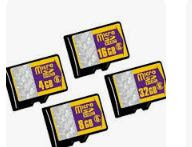
How to Fix iPhone Stuck in SOS Mode,
SOS mode on this iPhone is a feature that allows users to quickly contact emergency services in critical situations. However, sometimes, users experience an issue where their iPhone gets stuck or "stuck" in SOS mode, and cannot exit the mode. This can be annoying, especially if the iPhone cannot be used for normal functions.
Causes of iPhone Stuck in SOS Mode :
- Hardware damage – Damage to the volume buttons or side buttons can cause the iPhone to accidentally enter SOS mode.
- Software bug or error – A failed system update or other software error can cause iPhone to get stuck in SOS mode.
- Problems with SIM card or network – If there is a problem with the SIM card or cellular network, iPhone may have difficulty exiting SOS mode.
- Emergency situations – Sometimes, SOS mode is activated by certain apps or settings when the phone feels like it is in an emergency situation.
How to Solve iPhone Stuck in SOS Mode
1. Try Turning Off and Restarting iPhone
Here are the steps to restart your iPhone :
a. For iPhones with a Home button :
- Press and hold the sleep/wake button on the right side or top of your iPhone.
- Slide to turn off your iPhone.
- Once the iPhone turns off, press and hold the sleep/wake button again to turn it on.
b. For iPhones without a Home button iPhone :
- Press and hold the volume up button and volume down button on your cellphone at the same time, then press and hold the side button until the slider appears.
- Slide to turn off your iPhone.
- Once the iPhone turns off completely, press and hold the side button again to turn it on.
- Wait for a few seconds after turning off the phone and try turning it on again. If this works, then your iPhone should exit SOS mode.
2. Check SOS Mode Settings
Here's how to check the emergency SOS settings on your iPhone :
- Go to Settings > Emergency SOS.
- Make sure that the Auto Call and SOS Emergency Call options are set to your liking.
- If this is enabled, try disabling it and see if the iPhone exits SOS mode.
3. Check Volume Buttons and Side Buttons
Here are some steps to check these volume buttons and side buttons :
- Make sure the volume up and volume down buttons are pressed smoothly without resistance.
- Check the side buttons and make sure they can be pressed and function properly.
- If you find that any of the buttons are not working properly, consider taking your iPhone to an authorized Apple service center.
4. SIM Card and Network
Here are some steps to check SIM card and network :
- Check SIM Card: Make sure your SIM card is installed correctly and there is no damage. You can try removing and reinserting the SIM card or using another SIM card to see if the problem is related to the SIM card.
- Check Cellular Network: Make sure you have enough signal to contact emergency services. If the signal is very weak or non-existent, iPhone may not be able to exit SOS mode.
5. Reset Network Settings
Here are the best steps to reset network settings on iPhone :
- Go to Settings > General > Reset.
- Select Reset Network Settings.
- Enter the password if prompted, and confirm to reset network settings.
6. Perform a Software Update
Here's how to check for software updates :
- Go to Settings > General > Software Update.
- If there is an update available, select Download and Install to update iPhone.
- Once the update is complete, try checking if your iPhone successfully exits SOS mode.
7. Use Recovery Mode and Repair with iTunes
If none of the above works, then you can try to restore your iPhone using Recovery Mode and iTunes (or Finder if you are using macOS Catalina and later). This will restore the iPhone to factory settings and can also fix software issues that cause the iPhone to be stuck in SOS mode.
Here are the important steps to enter recovery mode and restore iPhone :
- Connect iPhone to computer using USB cable.
- Open iTunes (or Finder on macOS Catalina and later).
- Enter Recovery Mode by pressing and releasing the volume up button, then the volume down button, and pressing and holding the side button until the Apple logo appears, followed by the Recovery Mode screen.
- Select Restore iPhone in iTunes or Finder.
It's important to note that restoring your iPhone will also erase all data on the device, so make sure to back up before doing so.





















